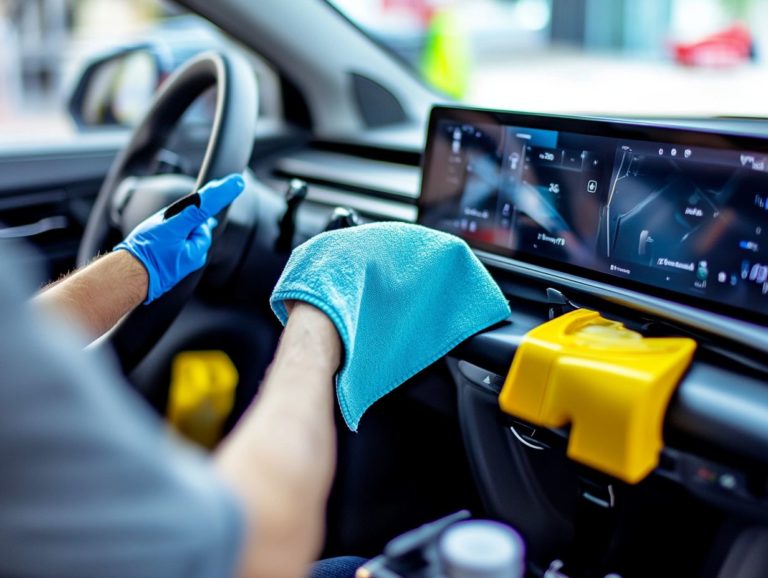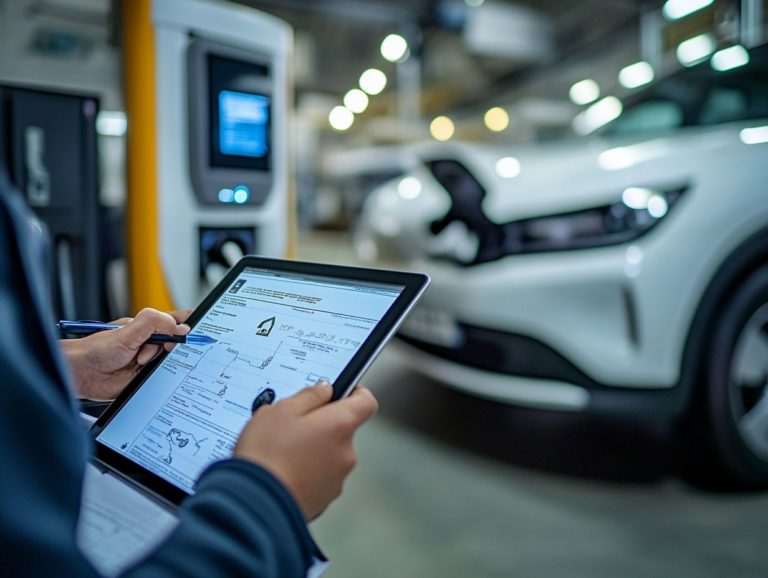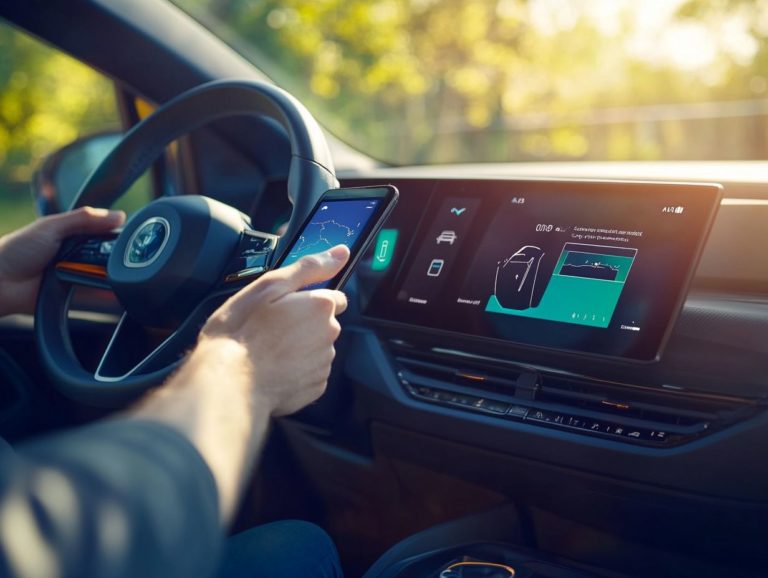How to Diagnose EV Charging Issues
Electric vehicles (EVs) are revolutionizing the way we think about transportation. However, like any advanced technology, they can encounter charging issues.
Let’s explore the common challenges you might face as an EV owner, guiding you through the signs and symptoms to watch for, along with ways to check the problems.
Discover essential tools and methods for troubleshooting, practical solutions for repairs, and valuable tips for preventative maintenance.
Whether you’re a seasoned EV owner or just stepping into this exciting world, this guide is designed to empower you to keep your vehicle charged and operating at peak performance.
Contents
- Key Takeaways:
- Identifying EV Charging Issues
- Diagnostic Techniques for EV Charging Issues
- Addressing EV Charging Issues
- Preventing EV Charging Issues
- Frequently Asked Questions
- 1. What are some common signs of EV charging issues?
- 2. How can I determine if the issue is with my EV or the charging station?
- 3. Why is my EV not charging at all?
- 4. Can extreme weather conditions affect EV charging?
- 5. What steps should I take if my EV’s charging speed has significantly decreased?
- 6. Can I diagnose EV charging issues on my own?
Key Takeaways:
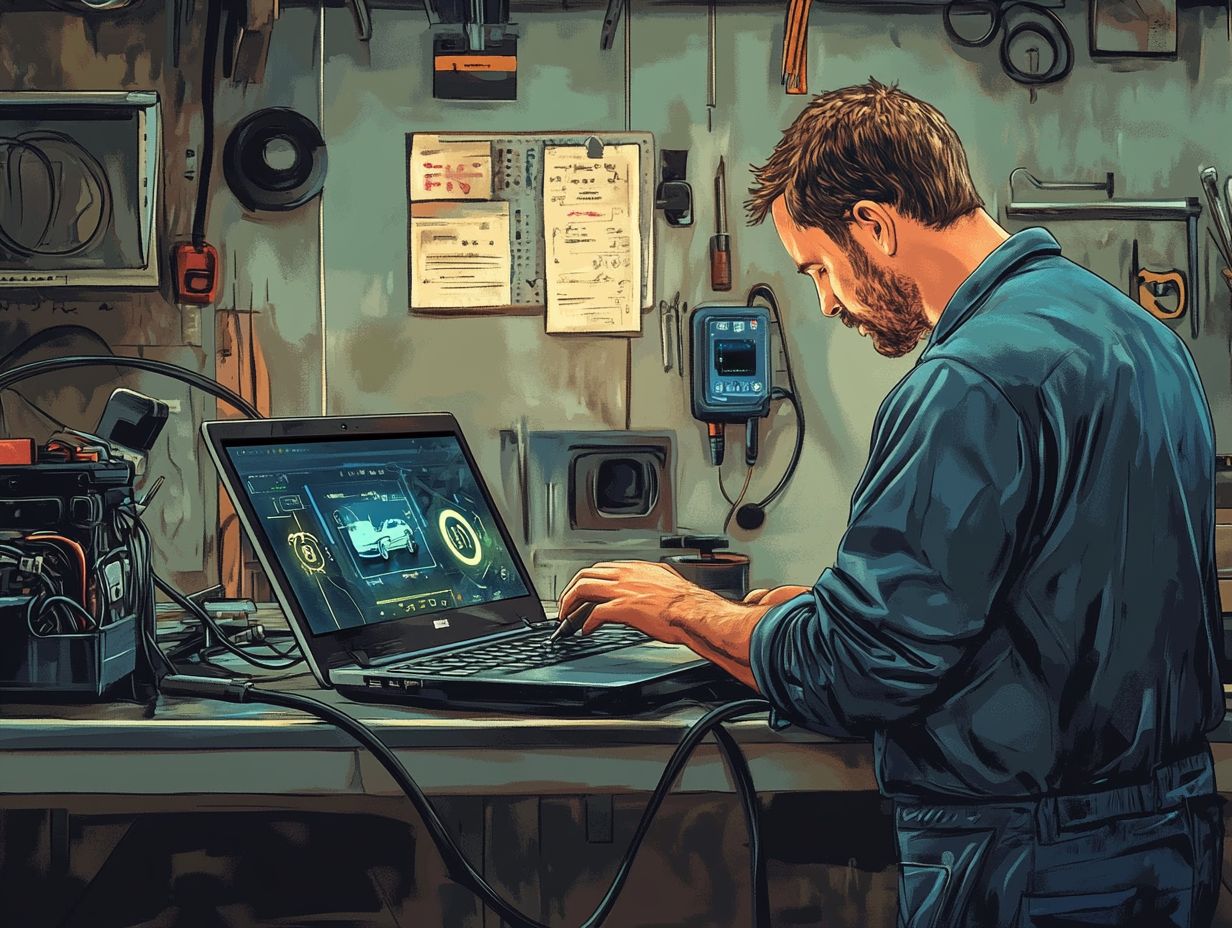
- Regular maintenance and following best practices can prevent EV charging issues before they occur.
- Identifying signs and symptoms of EV charging issues helps diagnose the root cause quickly and efficiently.
- Using the right tools is important for troubleshooting and addressing EV charging issues effectively.
Identifying EV Charging Issues
Identifying EV charging issues is essential for you as an electric vehicle owner, especially with the rising popularity of models like Tesla and Nissan Leaf.
You may encounter common challenges stemming from various factors, such as charging speed, compatibility problems with cables or stations, and network-related issues. These obstacles can lead to range anxiety and disrupt your overall driving experience.
Signs and Symptoms
Signs and symptoms of EV charging problems can vary. They often manifest as error messages on your vehicle’s dashboard, frustratingly slow charging speeds, or a complete failure to charge leading to that all-too-familiar anxiety for electric vehicle owners, whether you’re behind the wheel of a Tesla or a Nissan Leaf.
When you see messages like “Charging Station Unavailable” or “Temperature Too High”, it s a clear indicator that something’s wrong with the charging process. These notifications not only disrupt your experience but can also amplify your frustrations, especially when you’re in a hurry every second counts!
If you’re grappling with slow charging speeds, it could stem from an insufficient power supply or outdated charging equipment, causing even more delays. To tackle these issues, check the compatibility of your charging station, ensure all connections are secure, and consider upgrading to more efficient charging solutions. Doing so will ultimately pave the way for a smoother, less stressful charging experience.
Diagnostic Techniques for EV Charging Issues
Employing effective ways to check for EV charging issues is crucial for pinpointing the root cause of any problems. For further assistance, consider learning to diagnose common EV problems and ensuring timely resolutions.
Consider utilizing mobile apps or smart chargers that offer valuable insights into charging efficiency, compatibility issues, and the need for software updates or battery management checks. This proactive approach will not only streamline your charging experience but also enhance the overall performance of your electric vehicle.
Tools and Methods for Troubleshooting
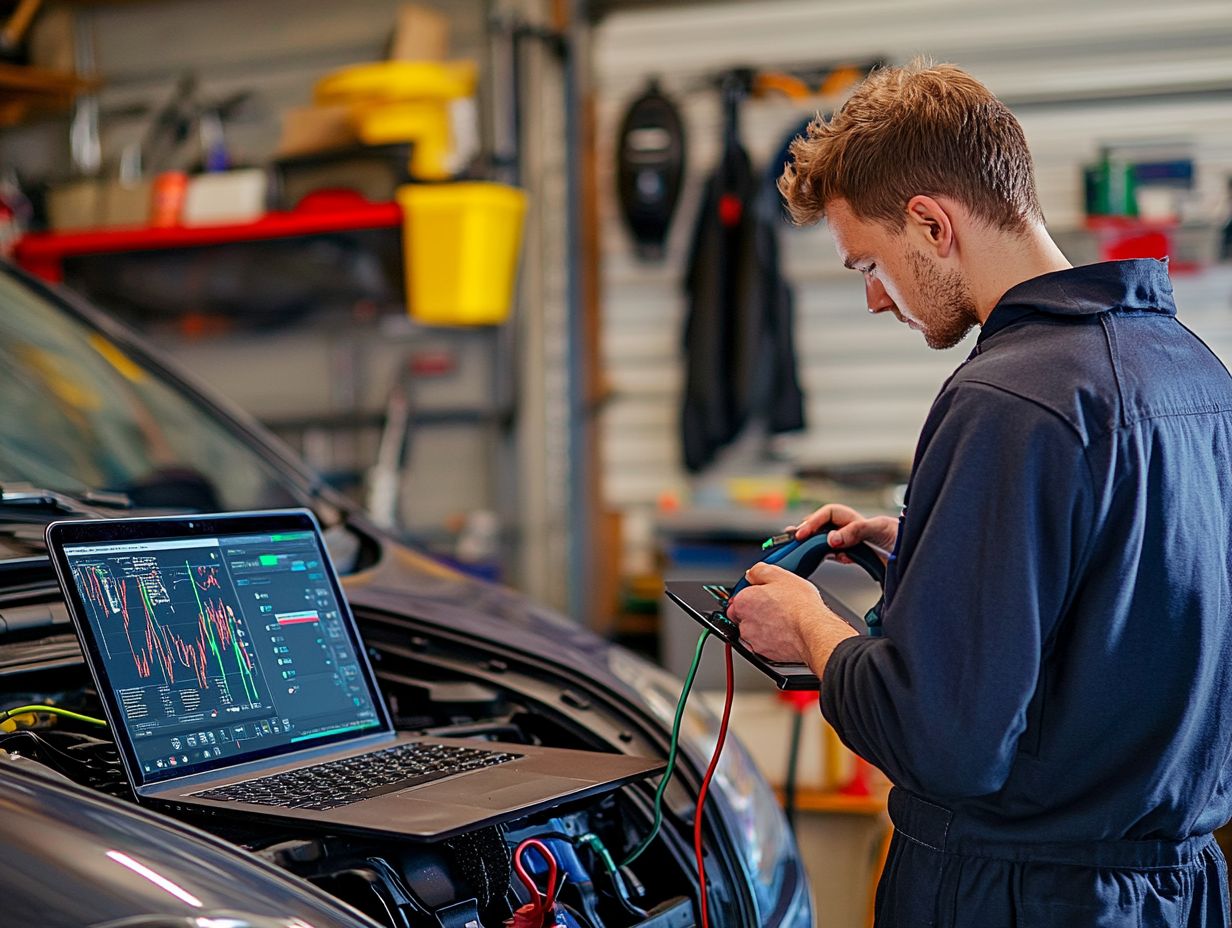
When you encounter EV charging issues, employing the right troubleshooting tools and techniques can greatly enhance your experience and restore functionality. This often involves assessing the power source, inspecting the charging cable for any defects, and ensuring compatibility with both the smart charger and the charging infrastructure. Additionally, understanding common charging issues with EVs can further assist in resolving problems effectively.
To kick off your troubleshooting, start by confirming that the power supply is operational. You may need to check the circuit breakers or fuses that control the charging station.
Next, take a close look at the integrity of the charging cable; any signs of wear, fraying, or exposed wires could disrupt connectivity and hinder charging.
Utilizing diagnostic tools is also key in determining if your electric vehicle and the charging station are compatible, ensuring that the necessary voltage and amperage specifications are in check.
These steps are vital for systematically eliminating potential issues, guiding you toward a successful resolution.
Mastering these troubleshooting techniques will make your EV journey smoother and more enjoyable.
Addressing EV Charging Issues
Addressing EV charging issues requires a strategic approach that helps you identify and implement effective solutions, ultimately enhancing the charging experience for electric vehicle owners like yourself.
This involves getting to know the various charging options available, tackling common error messages, and recognizing when it s time to reach out to customer support or perform maintenance on battery management systems. By doing so, you can ensure optimal performance and enjoy a seamless charging experience.
Possible Solutions and Repairs
Possible solutions and repairs for EV charging issues can vary widely, from straightforward fixes like ensuring a secure connection to more intricate repairs involving vehicle software updates and power supply assessments. Tackle compatibility issues with charging stations head-on to keep your EV charged and ready!
For example, if you find yourself grappling with slow charging, it s worth investigating the type of charger in use. Level 1 chargers are the basic chargers that plug into standard home outlets and generally lag behind Level 2 or DC fast chargers in terms of speed. You might also discover that adapters or converters can effectively resolve compatibility issues between different charging plug types.
Regular maintenance is crucial. Inspecting cables for wear and ensuring firmware is up to date can significantly boost efficiency. If problems persist, consulting a professional can offer deeper insights into systemic issues, such as electrical system malfunctions or battery health, ultimately guiding you toward a more robust solution.
Preventing EV Charging Issues
Preventing EV charging issues is crucial for ensuring the longevity and performance of electric vehicles, especially as dependence on charging infrastructure and renewable energy sources continues to rise.
By prioritizing regular maintenance, being mindful of battery management needs, and following best practices, you can significantly enhance your experience and minimize any potential disruptions.
Maintenance and Best Practices
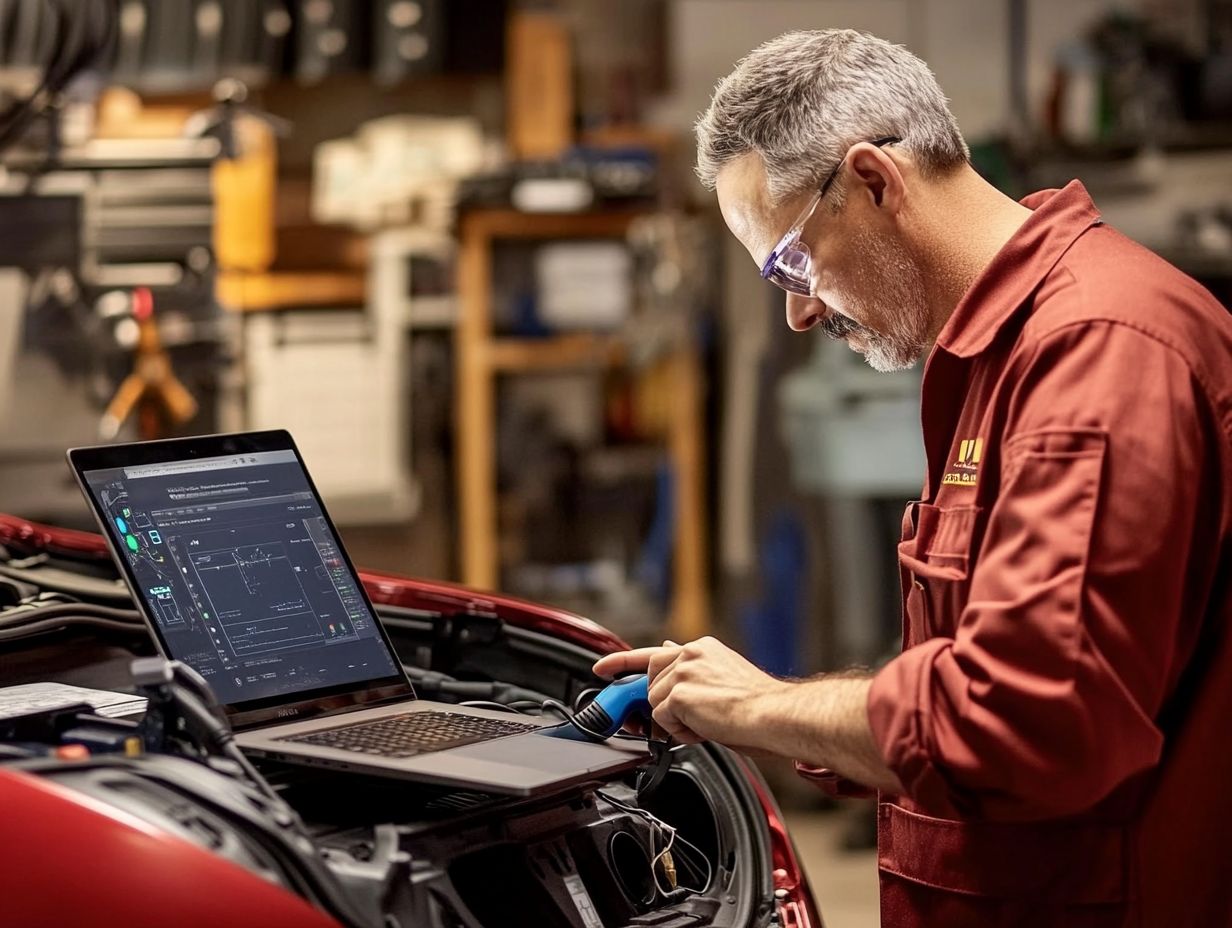
Regular maintenance and adherence to best practices are essential for ensuring that EV charging systems operate both efficiently and effectively. Key practices include managing the electrical panel, inspecting charging cables for wear, and utilizing smart chargers to optimize charging speed while embracing the environmental benefits of sustainable practices.
Conduct routine checks on charging cables to help prevent potential accidents and costly repairs, enhancing safety for all users. Smart chargers adapt the electricity flow based on current demand, speeding up the charging process while minimizing energy waste perfectly aligning with eco-friendly initiatives.
Establishing a regular maintenance schedule not only extends the lifespan of your charging equipment but also reinforces your commitment to sustainable practices. By incorporating these protocols, you can enjoy a seamless charging experience while making a positive contribution to environmental preservation and energy efficiency.
Charging Solutions for Different EV Models
In terms of charging solutions for various electric vehicle models like Tesla and Nissan Leaf, understanding the compatibility of charging options is essential for an optimal charging experience. Both public charging stations and home charging setups come with their own set of advantages and challenges.
For example, as a Tesla owner, you can take advantage of an extensive Supercharger network, allowing for rapid charging that minimizes downtime during longer journeys. On the other hand, if you drive a Nissan Leaf, you ll likely rely on Level 2 charging stations, which provide a slower, but steady charge that perfectly suits your daily commuting needs.
It’s important to consider factors like battery size, charging speed, and how frequently you use your vehicle, as these elements significantly influence the type of charging infrastructure you should choose. By adapting to the unique requirements of each EV model, you can enhance your overall experience and maximize the efficiency of the charging process.
Watch this video to learn more about diagnosing EV charging issues!
Frequently Asked Questions
What are the common charging options for electric vehicles?
Charging options include Level 1 chargers, which plug into standard outlets, Level 2 chargers for faster charging at home or public stations, and DC fast chargers for rapid charging on the go.
How often should I check my EV charging equipment?
It s best to conduct routine inspections monthly, focusing on cables for wear and ensuring firmware is up to date.
Where can I find reliable customer support for my EV?
Check with your vehicle manufacturer or local dealerships for specialized customer support related to EV charging issues.
Don t wait until your battery runs low understand your charging options today!
1. What are some common signs of EV charging issues?
Some common signs of EV charging issues include slow charging and difficulty connecting to the charger. Frequent interruptions during charging can also be a sign. Stay alert for these signs to keep your EV running smoothly!
2. How can I determine if the issue is with my EV or the charging station?
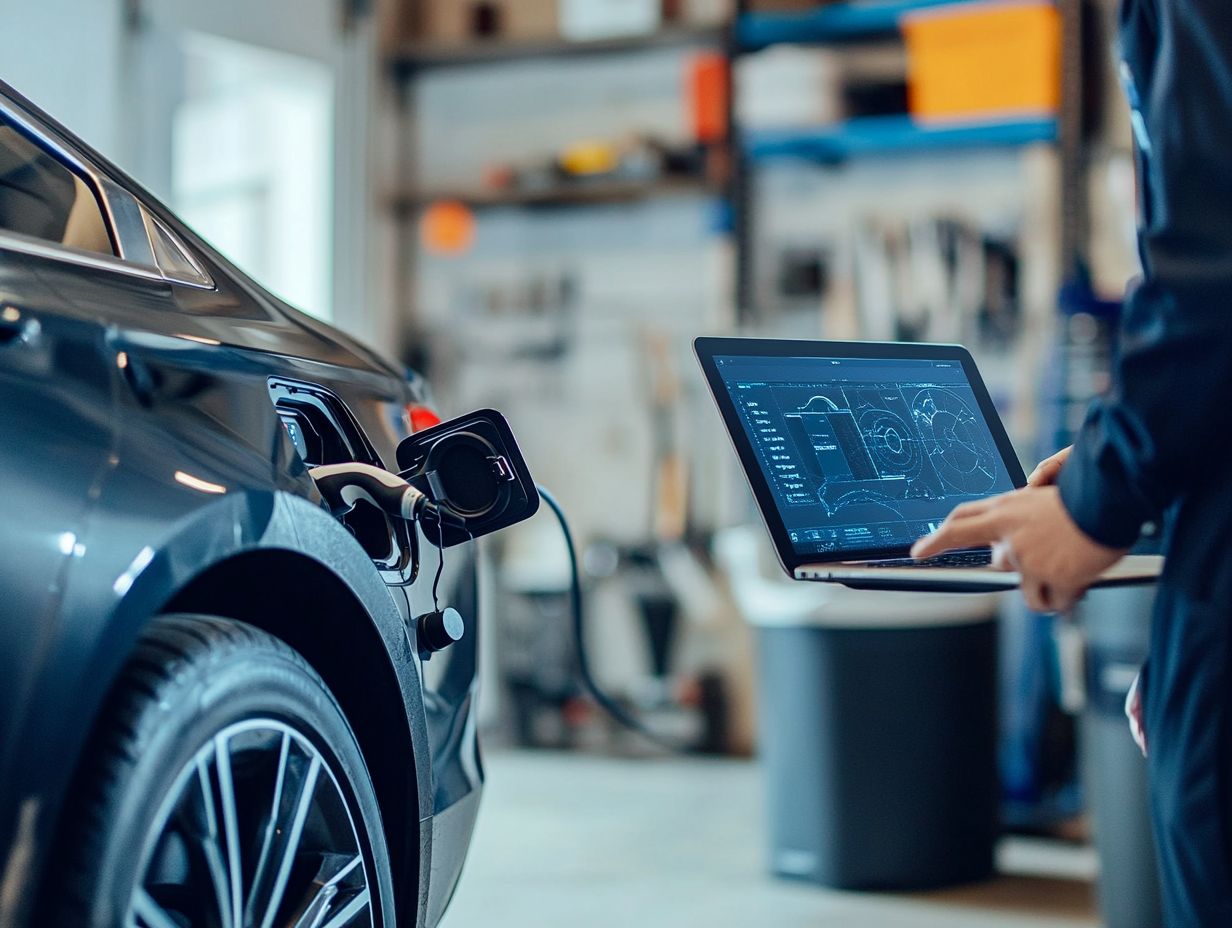
To determine the issue, try charging your EV at a different station. If the problem persists, your EV may have a fault. For guidance on troubleshooting, you can refer to what to do if your EV battery is not charging. If the issue is resolved, then the problem is with the charging station.
3. Why is my EV not charging at all?
Several reasons may cause your EV not to charge. This includes a faulty charging cable or a problem with your EV’s battery. It’s best to consult with a professional to diagnose the exact cause.
4. Can extreme weather conditions affect EV charging?
Extreme weather can affect charging capabilities. Cold temperatures may reduce battery capacity, while heat can lead to overheating and slower charging speeds.
5. What steps should I take if my EV’s charging speed has significantly decreased?
If charging speed decreases, first check the station for damage. If it looks fine, the issue may lie with your EV’s battery or charging system. Don’t let slow charging slow you down! Take action immediately.
6. Can I diagnose EV charging issues on my own?
While you can troubleshoot minor issues, consulting a professional for checking and fixing is always advisable. This helps ensure your safety and prevents further complications.

